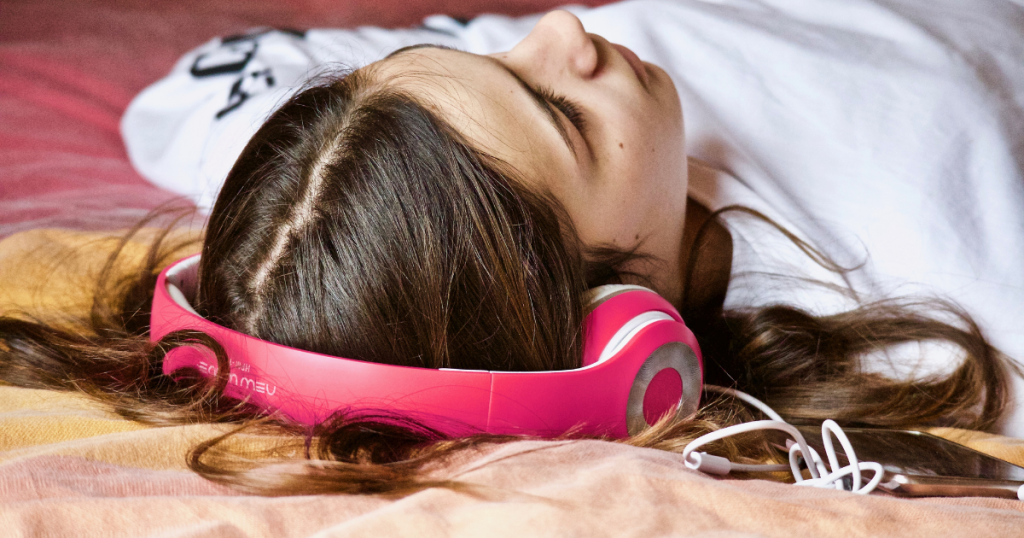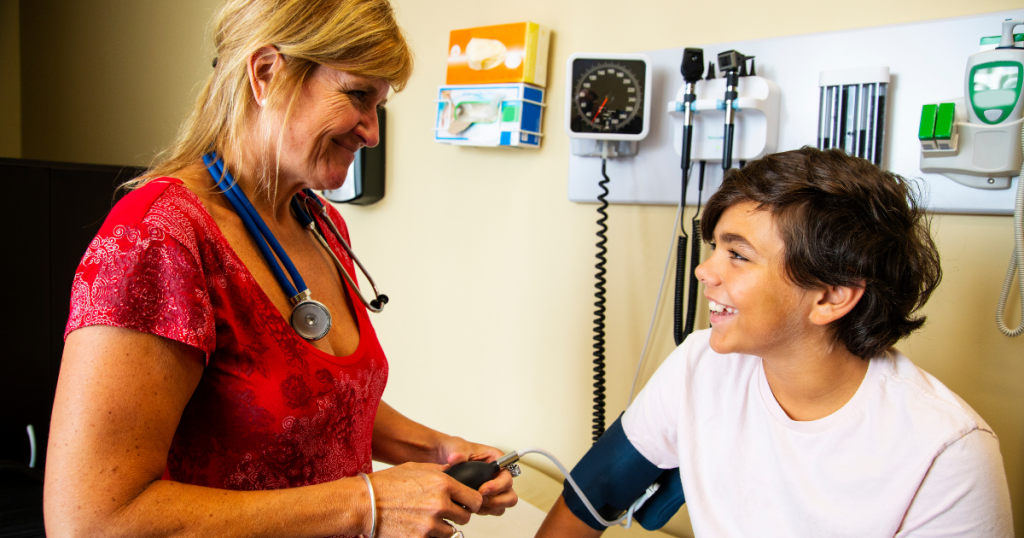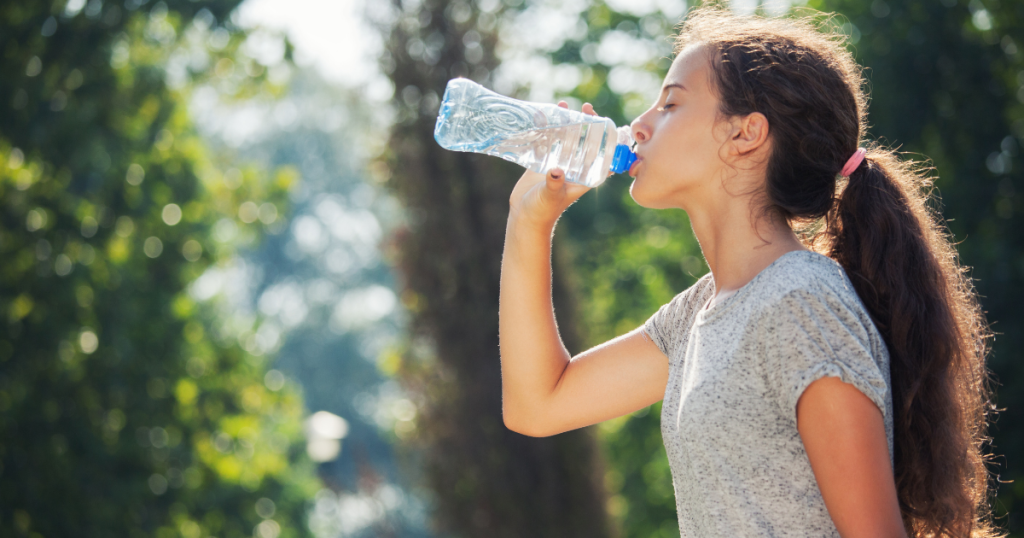
Author: Alison L. Christy, MD, PhD, Providence Pediatric Neurology at St. Vincent Medical Center – Portland, Oregon
Reviewed: October 2021
SUMMARY
Postural orthostatic tachycardia syndrome (POTS) is a type of dysautonomia, meaning a problem with the autonomic nervous system. Symptoms include lightheadedness, fainting, fatigue, and difficulty exercising. It can occur in both children and adults, and often begins in early or mid-adolescence.
JUMP TO
Disorder Overview
DESCRIPTION
In POTS, the different parts of the nervous system are out of balance. They do not work together as needed.
The nervous system can be divided into two parts:
- Central nervous system (CNS). The CNS consists of the brain and spinal cord.
- Peripheral nervous system (PNS). The PNS consists of the nerves that travel from the brain and spinal cord out through the body, and from the body back to the brain and spinal cord. The PNS itself can also be divided into two parts:
- Somatic nervous system. The somatic nervous system controls voluntary movement.
- Autonomic nervous system. The autonomic nervous system regulates functions of the body without conscious thought.
Role of the Autonomic Nervous System
The autonomic nervous system works to regulate involuntary, or unconscious, bodily functions. For instance, it can regulate breathing, even if we are not thinking about breathing. In addition to breathing, the autonomic nervous system regulates:
- Heart rate
- Blood pressure
- Sweating
- Digestion
The autonomic system is part of the PNS. However, some areas of the CNS can also activate or suppress the autonomic systems. Areas of the CNS that can impact autonomic systems include:
- The hypothalamus, which regulates hormones
- Parts of the brain that respond to emotions


POTS and the Autonomic System
Most of the time, the CNS works with the PNS to keep a balance, or homeostasis, among the systems. This leads to optimal functioning. In POTS, these systems are not working properly. This can affect blood pressure, which in turn can trigger many of the symptoms of POTS.
When a person stands up from sitting or lying, the autonomic system normally works to constrict blood vessels. This increases blood pressure and helps blood continue to flow to the brain despite the effects of gravity. When the blood pressure does not increase enough while standing upright, this is called orthostatic hypotension.
In POTS, the blood pressure does not drop when going from sitting/lying to a standing position—this occurs with the condition called orthostatic hypotension. When the autonomic nervous system is working properly, the blood pressure rises when a person stands. In POTS, when a person stands, the heart rate increases dramatically to keep blood flowing to the brain. This is call orthostatic intolerance.
While orthostatic hypotension indicates low blood pressure with standing, orthostatic intolerance causes unpleasant sensations, like instability, lightheadedness, and heart palpitations. This means that the autonomic system is not working properly. This might be due to a problem with the CNS or the PNS.
SIGNS AND SYMPTOMS
Symptoms of POTS can include, but are not limited to:
- Orthostatic intolerance (difficulty standing upright)
- Tachycardia (rapid heart rate)
- Lightheadedness or dizziness
- Fatigue
- Anxiety
- Nausea
- Headache
- Problems with concentration, focus, and memory
- Syncope (fainting or passing out)
- Intolerance of heat or cold
- Somatic hypervigilance (perceiving normal sensations as intense or distressing)


CAUSES
We often do not know what causes POTS. The cause may not be the same for everyone. Some possible causes include:
Hypovolemia
Neuroendocrine dysfunction
Small-fiber neuropathy
Autoimmune disease
Deconditioning
Many patients with POTS avoid physical activity because they feel lightheaded when standing or because they become very fatigued. However, symptoms of POTS can worsen when patients are sedentary. Increased physical activity and exercise is important for improving symptoms. Deconditioning, or lack of physical activity, is probably not the main cause of a case of POTS. However, it can worsen the condition.
DIAGNOSIS AND LABORATORY INVESTIGATIONS
POTS is diagnosed clinically. There is no blood test or imaging that can confirm a diagnosis of POTS. However, a doctor may do further testing to look for diseases that might be an underlying cause of POTS.
A clinical diagnosis can be made in a doctor’s office using heart-rate testing.
- The patient will be asked to lie down.
- Heart rate and blood pressure will be monitored during rest.
- Heart rate and blood pressure will be measured again after standing.
Heart-rate testing can be done in any doctor’s office. Sometimes a neurologist may perform a tilt-table test to measure heart rate and blood pressure with other changes in position. This is the best test for a diagnosis of POTS, but may not be as accurate in children, or adults who have short stature.


Criteria for a POTS Diagnosis
A POTS diagnosis is related to having a rapid heart rate (“tachycardia”) while in an upright position (“postural orthostatic”). The exact criteria are as follows:
Children and teenagers
Adults
If a patient has low blood pressure when standing up, but no increase in heart rate, they may be diagnosed with orthostatic hypotension, not POTS.
TREATMENT AND THERAPIES
First-Line Treatments
Initial and first-line treatments of POTS include:
- Increasing hydration. Most adults and adolescents should drink about 64 ounces (2 liters) of fluid a day. Some people with POTS need up to 100 ounces (3 liters) of fluid a day.
- A younger child should drink as much in ounces as their weight in kilograms. This means a 25-kilogram child (about 55 pounds) should drink about 25 ounces of fluid a day. However, if a young child has a diagnosis of POTS, they should discuss their fluid consumption with their physician.
- Extra salt intake. Salt helps hold fluid in the blood stream, increasing blood volume. Extra salt intake can be helpful in POTS. Consuming 3 to 10 grams of salt per day may be appropriate. If it is difficult to get enough salt, a doctor can prescribe salt tablets.
- Exercise. Exercise is very important for managing POTS symptoms and decreasing them over time. However, starting an exercise program can be challenging due to the symptoms themselves. For instance, lightheadedness and fatigue can make it hard to exercise. A physical therapist or an exercise physiologist can recommend exercises that can be done while sitting or lying down. Patients should increase exercise gradually to avoid over-exhaustion. Eventually, patients should aim to get around 20 to 30 minutes of exercise, 3 to 4 days a week.
Other Treatments
Additional treatments include:
- Diet. Many people with POTS feel better if they eat small meals throughout the day. It can also help to avoid sugars and simple carbohydrates. This means developing a diet low in white flour, white rice, pasta, tortillas, and other processed carbs.
- Compression clothing. Compression stockings, compression tights, and abdominal binders may help increase blood pressure when standing.
- Medications. These include, but are not limited to:
- Corticosteroids. These help the body retain salt. One example is fludrocortisone.
- Vasoconstrictors. These increase blood pressure. One example is midodrine
- Beta blockers. These stabilize blood pressure. Examples are metoprolol and propranolol.
OUTLOOK
Most people with POTS have some recovery within 1 to 5 years of using first-line treatments. However, some symptoms may not resolve. Adolescents with POTS may have recurrences later in life.


Resources
Organizations
Dysautonomia International
Dysautonomia International is a 501(c)(3) organization that advocates for over 70 million individuals worldwide who live with autonomic nervous system disorders through research, clinician education, public awareness, and patient empowerment programs.
Dysautonomia International has a listing of support groups based on geographic location, type of dysautonomia, and communities (military, parents, and teens). The POTSibilities Parents private Facebook group provides a place for parents of children with dysautonomia to connect. Currently, there are over 9,000 members in the group.
Dysautonomia Support Network
Dysautonomia Support Network (DSN) is a U.S. based, 501(c)(3) non-profit whose mission is to provide a community that empowers and supports those affected by dysautonomia to live their best lives. On Facebook, DSN hosts a public Dysautonomia Support Network as well as a private Dysautonomia Support Network – Global Community.
The Dysautonomia Project
The mission of The Dysautonomia Project is to educate healthcare professionals, patients, and communities about dysautonomia.
Standing Up to POTS
The mission of Standing Up to POTS is to improve the quality of life for those living with postural orthostatic tachycardia syndrome through research, advocacy, and support. They host a private Facebook group with over 3,000 members.
Bobby Jones Chiari & Syringomyelia Foundation
The mission of the Bobby Jones Chiari & Syringomyelia Foundation (Bobby Jones CSF) is to advance knowledge through research and to educate the medical, allied sciences and lay communities about Chiari, syringomyelia and related disorders, including postural orthostatic tachycardia syndrome (POTS). Patient information includes the Chiari Malformation & Syringomyelia Handbook which is an excellent resource for patients and medical professionals. Join the online community to connect with patients, families, friends and caregivers for support and inspiration.
Publications
JCN: What Your Pediatric Neurologist Wants You to Know – POTS
Podcast from SAGE Neuroscience and Neurology/Journal of Child Neurology (JCN). JCN’s Residents and Fellows Board Director, Dr. Alison Christy, interviews Dr. Svetlana Blitshteyn, Director of Dysautonomia Clinic and Amherst Neurology, and Clinical Assistant Professor of Neurology at University at Buffalo School of Medicine and Biomedical Sciences about Postural Tachycardia Syndrome (POTS).
Child Neurology Foundation (CNF) solicits resources from the community to be included on this webpage through an application process. CNF reserves the right to remove entities at any time if information is deemed inappropriate or inconsistent with the mission, vision, and values of CNF.
Research
ClinicalTrials.gov for Postural Orthostatic Tachycardia Syndrome (birth to 17 years)
These are clinical trials that are recruiting or will be recruiting. Updates are made daily, so you are encouraged to check back frequently.
ClinicalTrials.gov is a database of privately and publicly funded clinical studies conducted around the world. This is a resource provided by the U.S. National Library of Medicine (NLM), which is an institute within the National Institutes of Health (NIH). Listing a study does not mean it has been evaluated by the U.S. Federal Government. Please read the NLM disclaimer for details.
Before participating in a study, you are encouraged to talk to your health care provider and learn about the risks and potential benefits.
Family Stories
The organization Standing Up to POTS highlights real people, real stories on the Profiles: Living with POTS page.
The information in the CNF Child Neurology Disorder Directory is not intended to provide diagnosis, treatment, or medical advice and should not be considered a substitute for advice from a healthcare professional. Content provided is for informational purposes only. CNF is not responsible for actions taken based on the information included on this webpage. Please consult with a physician or other healthcare professional regarding any medical or health related diagnosis or treatment options.
References
Chen G, Junbao D, Jin H, Huang Y (2020). Postural tachycardia syndrome in children and adolescents: pathophysiology and clinical management. Frontiers in Pediatrics. Aug(8):474. PMID: 32974246; https://doi.org/10.3389/fped.2020.00474
Dysautonomia International. Postural Orthostatic Tachycardia Syndrome. http://www.dysautonomiainternational.org
Cheshire W. Postural Tachycardia Syndrome. In: UpToDate, Goddeau R (Ed), UpToDate, Waltham, MA.
Hasan B, Almasri J, Marwa B, Klaas KM, Fischer PR (2020). Treatment of postural orthostatic tachycardia syndrome with medication: a systematic review. Journal of Child Neurology. Aug;35(14):1004-1016. PMID: 32838632; https://doi.org/10.1177/0883073820948679
Journal of Child Neurology, 2021. What your pediatric neurologist wants you to know: POTS. [podcast] SAGE Neuroscience and Neurology. Available at: http://sageneuroscience.sage-publications.libsynpro.com/jcn-what-your-pediatric-neurologist-wants-you-to-know-pots
POTS UK. https://www.potsuk.org
National Institute of Neurological Disorders and Stroke. Postural Tachycardia Syndrome Information Page https://www.ninds.nih.gov/Disorders/All-Disorders/Postural-Tachycardia-Syndrome-Information-Page
Raj SR, Arnold AC, Barboi A et al (2021). Long-COVID postural tachycardia syndrome: an American Autonomic Society Statement. Clinical Autonomic Research. Mar;31:365-368. PMID: 33740207; https://doi.org/10.1007/s10286-021-00798-2
Staples A, Thompson NR, Moodley M (2020). Pediatric-onset postural tachycardia syndrome in a single tertiary care center. Journal of Child Neurology. Jul;35(8):525-535. PMID: 32314650; https://doi.org/10.1177/0883073820916260
Thank you to our 2023 Disorder Directory partners:





